Sunrise, Friday, January 3
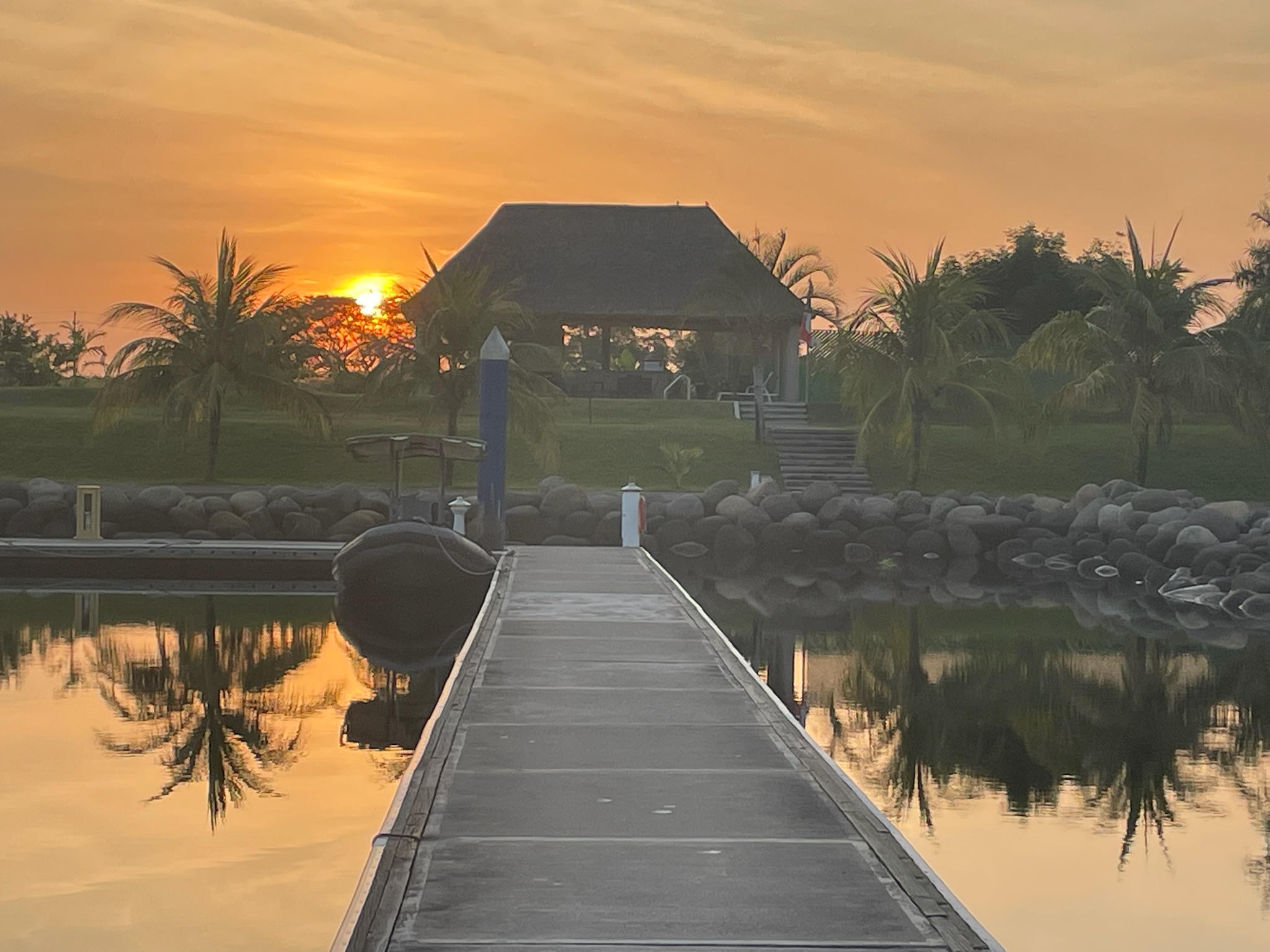
Miguel picked us up from the marina at 0800. We drove for about 45-minutes to a town named Tuxtla Chico, but Miguel kept referring to it by its nickname, Chocolate Town. Along the way, Miguel chatted non-stop, explaining to us what we were seeing along the ways (what each of the buildings were, what produce was being farmed, what kinds of trees were along the road, etc.) and about Mexico’s economy, history and culture. Miguel was a history buff and enthusiastic about his own heritage, making him a wealth of information.
Our first stop was a park that was a tribute to the town’s Mayan heritage. In the middle of the park was a sculpture depicting a ring and a black ball, which were the components of a game that the Mayans played. In the game, the ball was made of rubber (rubber trees grew in the area). Embedded into the ground around the sculpture was a ring made of small stones that had etchings at regular intervals.
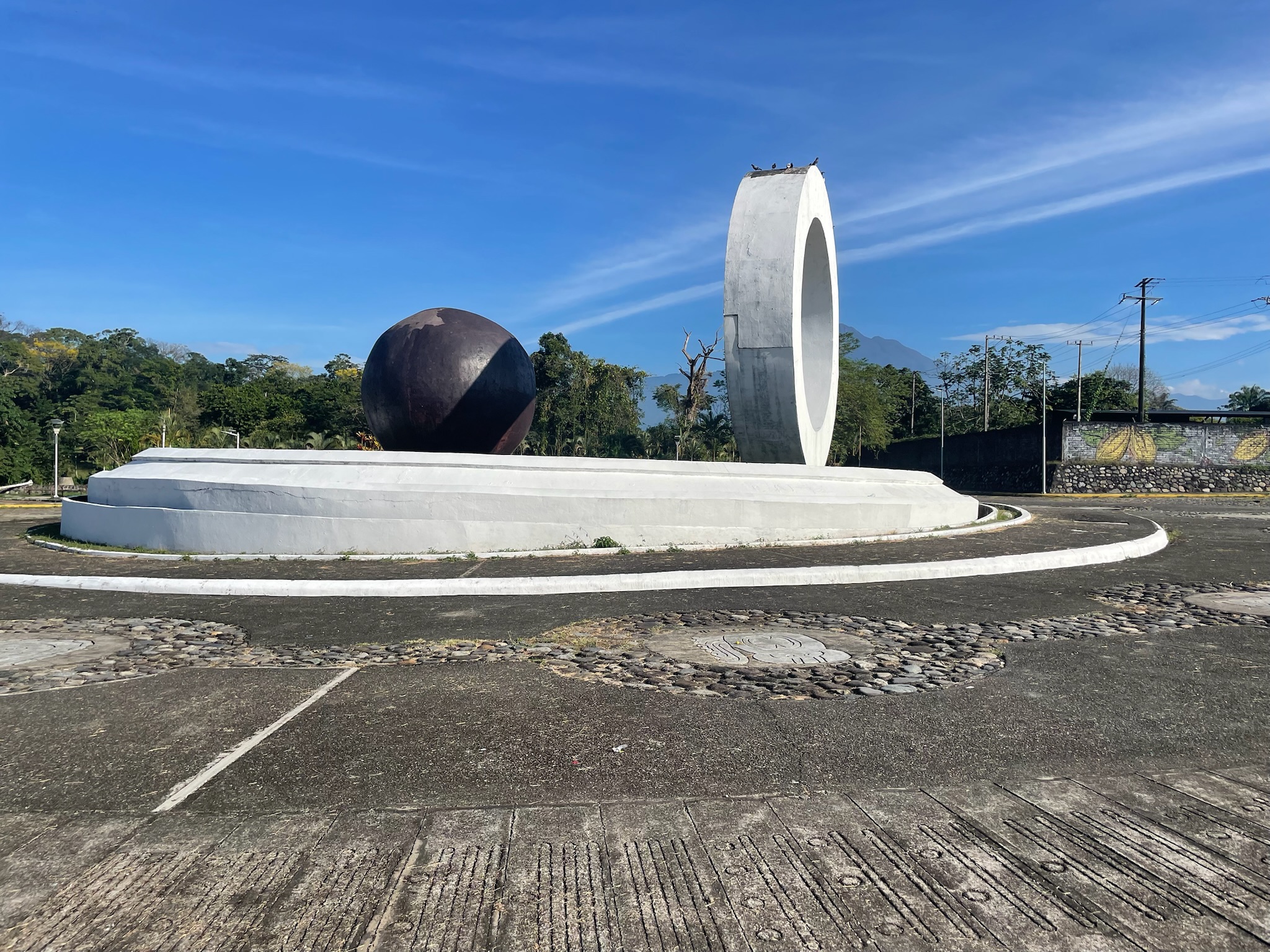
We didn’t examine every etching, but the ones we saw were all similar in artistic style, different images from one another.
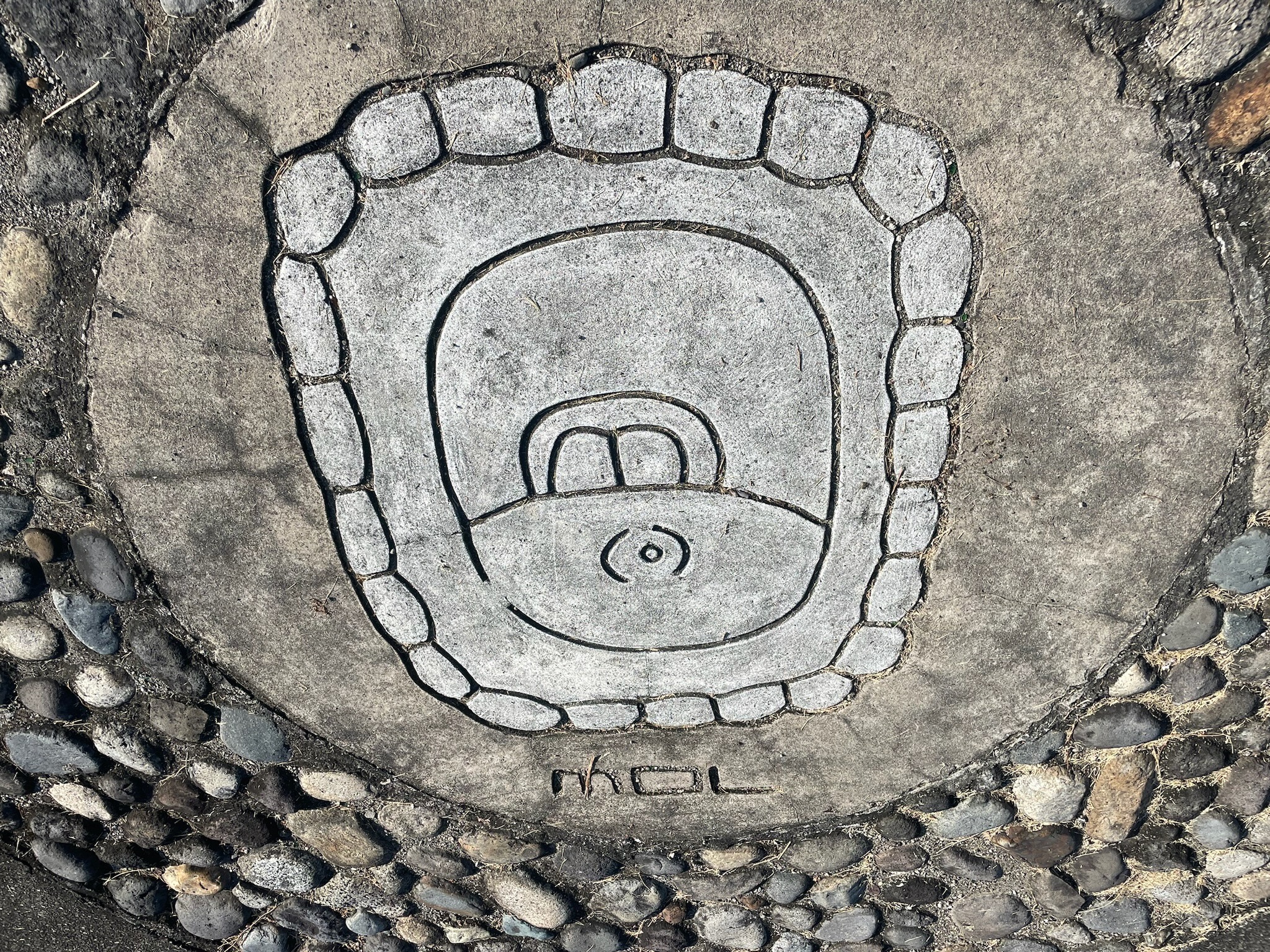
As we drove from the park through the town, Miguel said there were many chocolate making families in this town. The chocolatier that he was taking us, Chepi Laparra, was award winning, both in Mexico and internationally.
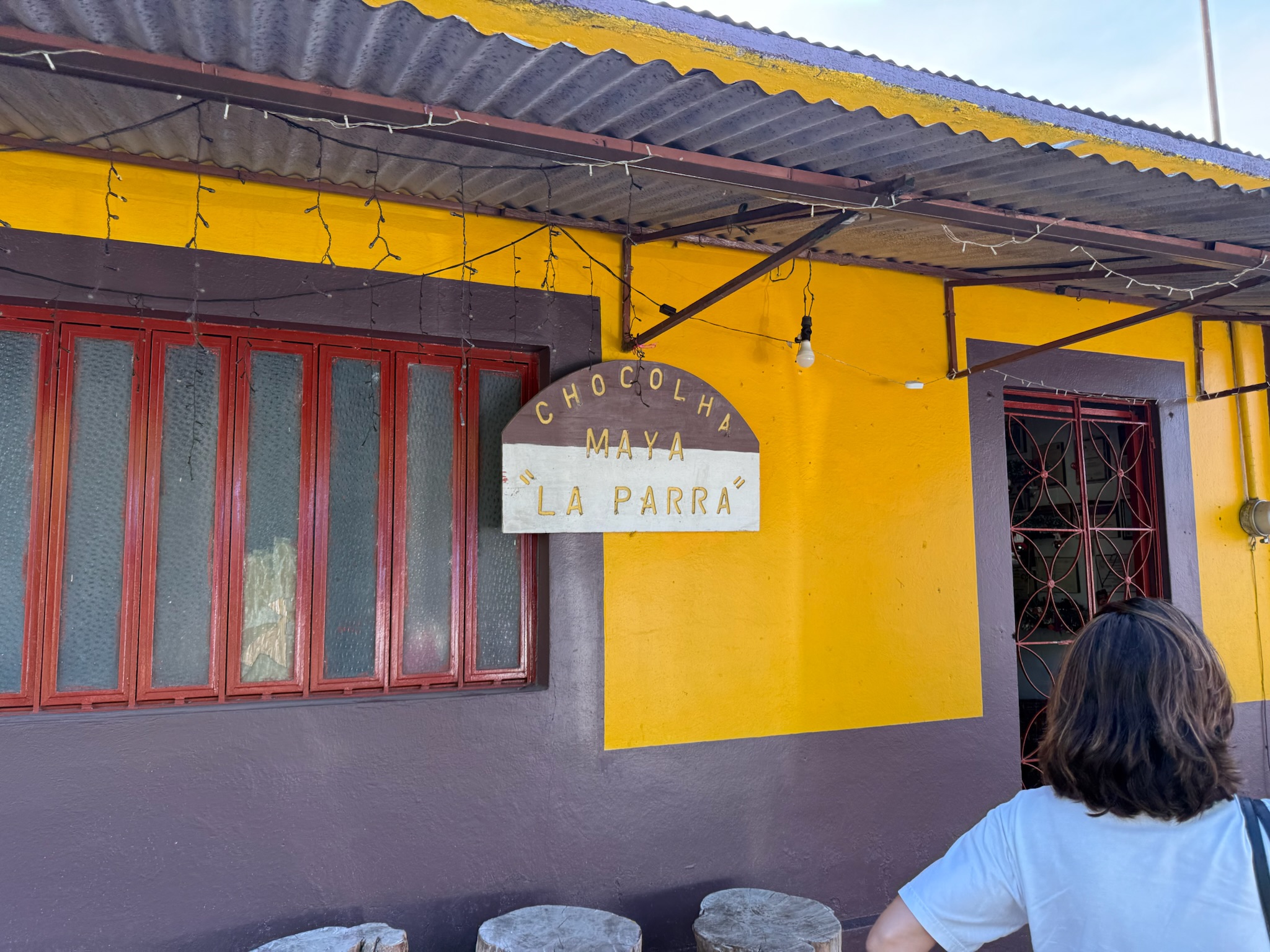
As is typical in Mexico, it looked like the chocolatier was in a house that doubled as a personal residence. The front room was a shop. One wall was completely covered with awards photos of Dona Chepi with high-ranking politicians and famous people.
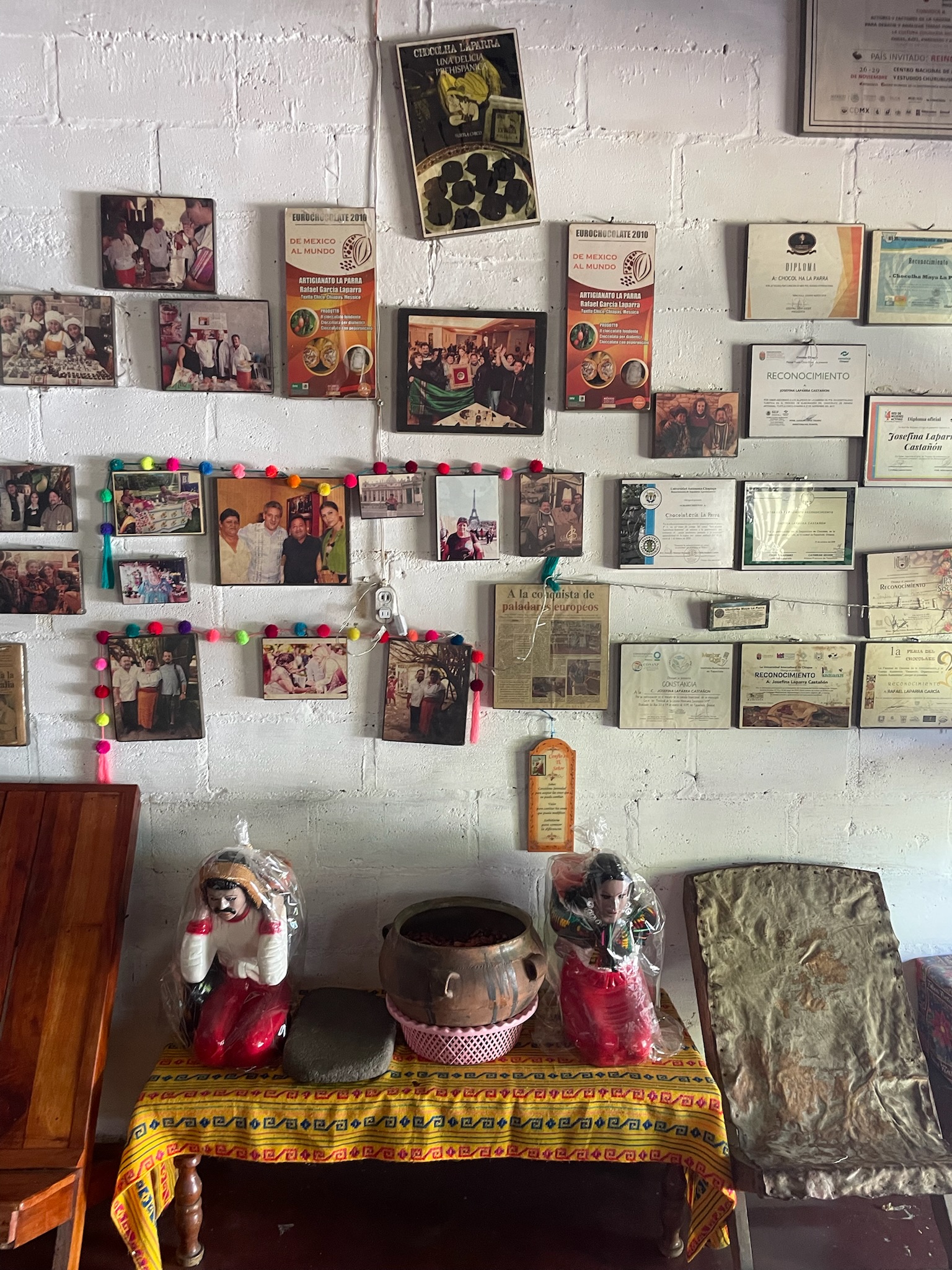
We were escorted into the back yard, to a covered patio that was cheerfully decorated with a beautiful painting. Miguel explained that this was a generational family business and the other women depicted were Chepi’s mother and grandmother.
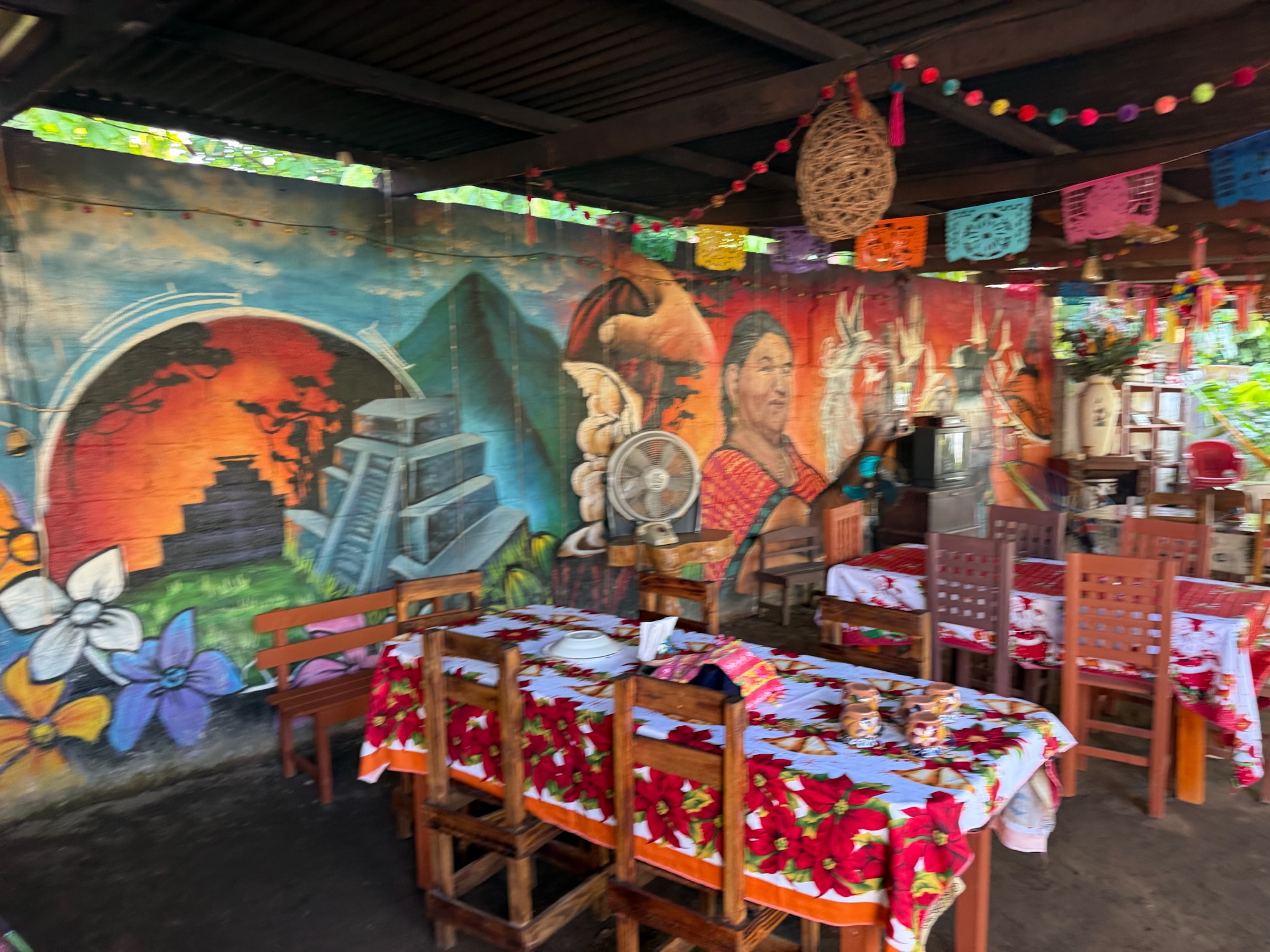
A traditional breakfast was part of the package. Miguel explained that this was where the chocolate was made, and the demonstration would start after we finished eating.
The first dish they brought out were tamales, along with some accoutrements: tortilla chips, a spicy salsa, locally made cream cheese, refried black beans, a slightly thickened cream, and a basket of freshly baked muffins and pan de leches (Mexican sweet rolls).
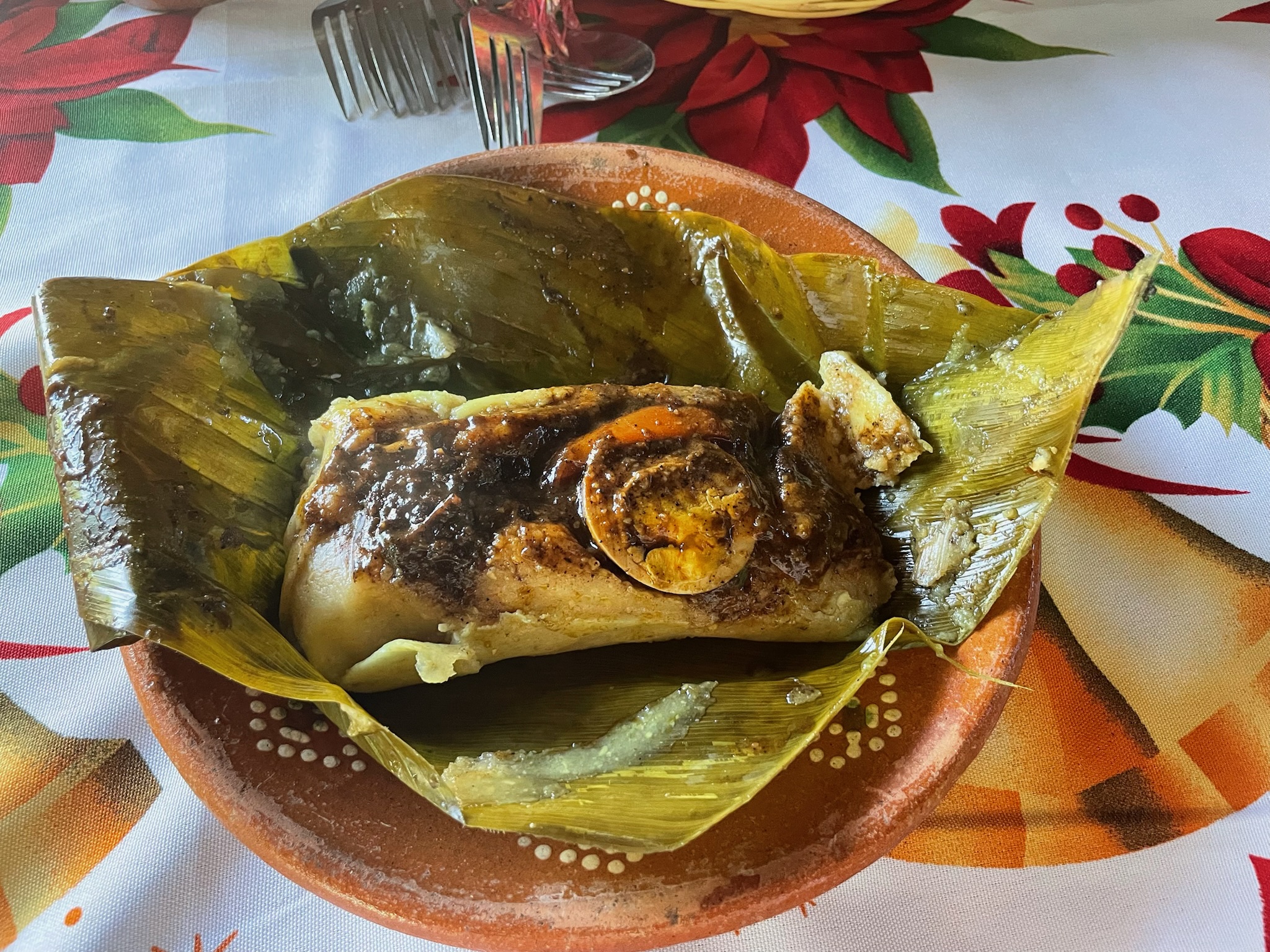
Tamales are a Mexican staple dish that we’ve never written about before because we didn’t view them as an “exotic” food (reminder that as San Diegans, our regular diet included a lot of Mexican food. Our idea of “exotic” may be skewed). Tamales are a corn dough wrapped around a filling of some sort. The tamale is wrapped in a corn husk or banana leaf and steamed. Tamale fillings vary. In San Diego, we usually see pork, chicken and beef fillings, but we’ve seen a wide variety of fillings, including sweet fillings.
These were chicken tamales, and they also had an olive and a prune inside and egg on top. It was the most unique tamale we’ve ever had, and also one of the best we’ve ever had.
The next dish they brought out were quesadillas (a mild cheese similar to mozzarella melted inside a tortilla). Miguel encouraged us to add the locally made cream cheese, salsa and refried black beans into our quesadilla. Much to our surprise, while the texture of the cheese was the same as regular cream cheese, it tasted like sour cream.
They also served a platter of fried plantains. Miguel encouraged us to cover the plantains in the cream cheese and cream. The tanginess was the perfect accompaniment to the sweet banana.

The pride and joy of the meal was the traditional local Mexican hot chocolate. In Mexico, it’s made with water instead of milk, has little sugar, and is spiced. We could identify cinnamon, but were unsure what the other spices were — and Miguel wouldn’t tell us. It tasted a lot like mole, which Christi is not a fan of. Keith liked it. Eric loved it.
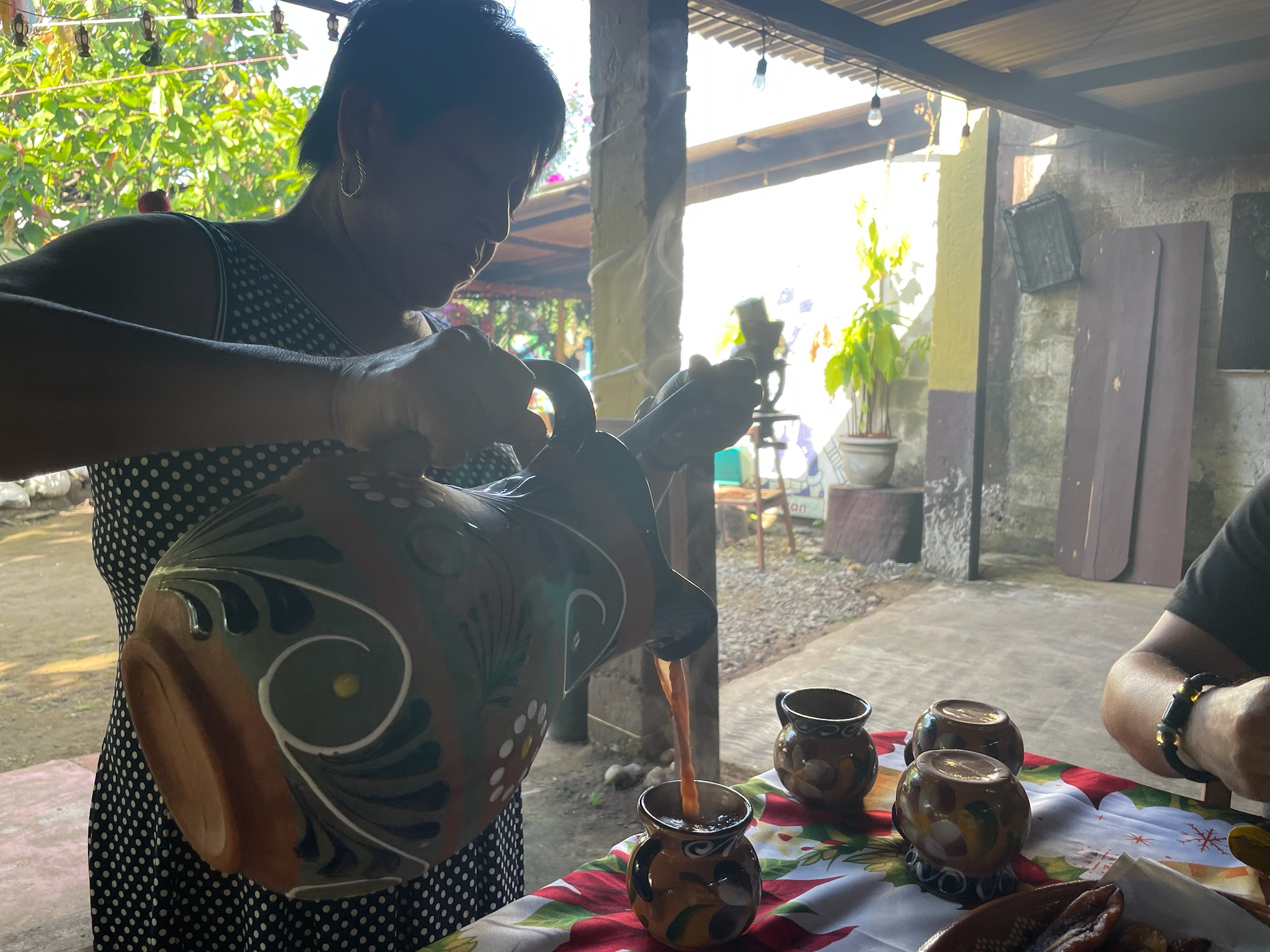
Once we were done eating, Miguel walked us over a few feet to one of the cacao trees in the yard.
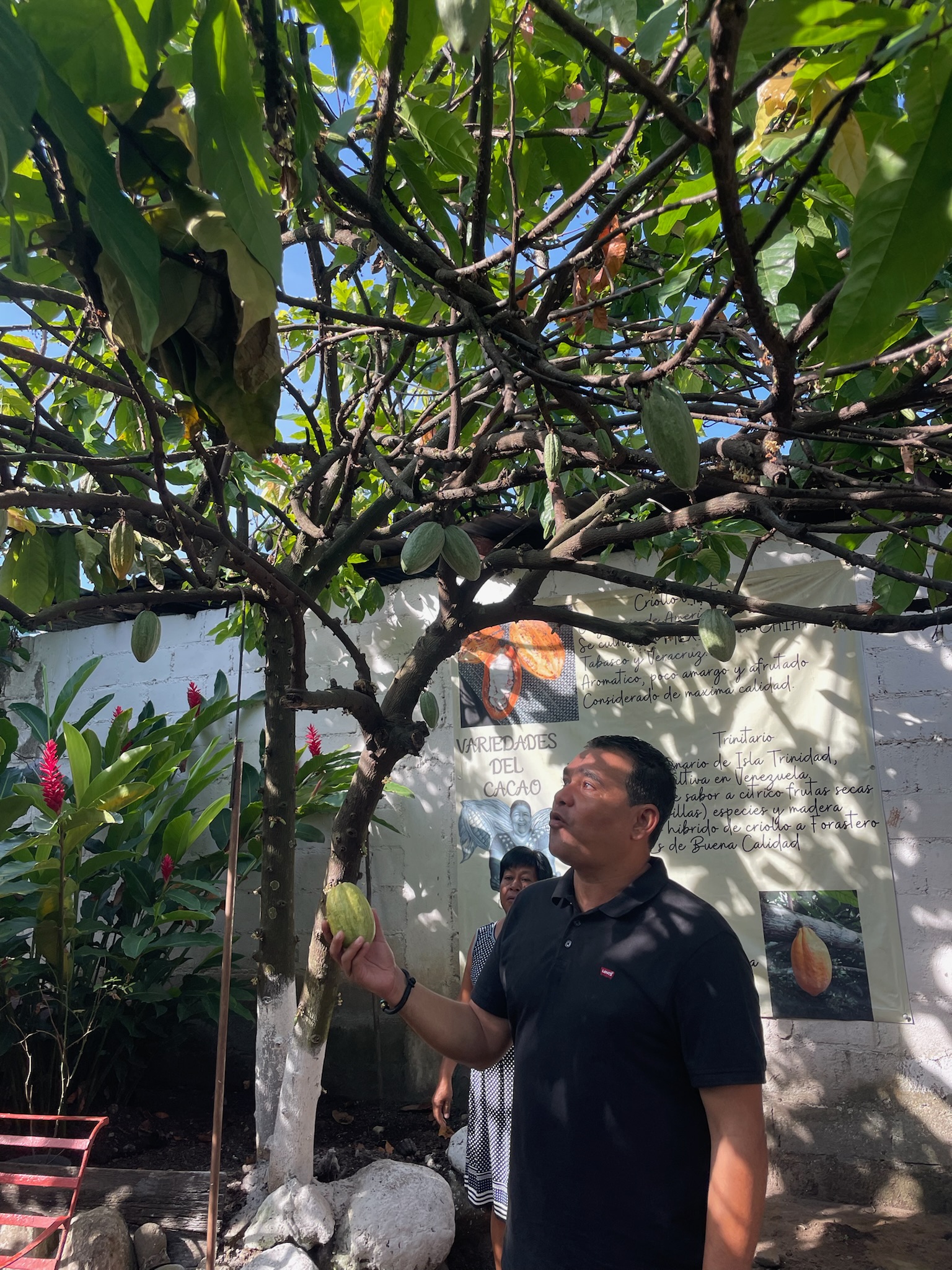
He gave some history, then cut one open so we could see the line of seeds. He had us taste the fruit, which is both sweet and tangy, and delicious.
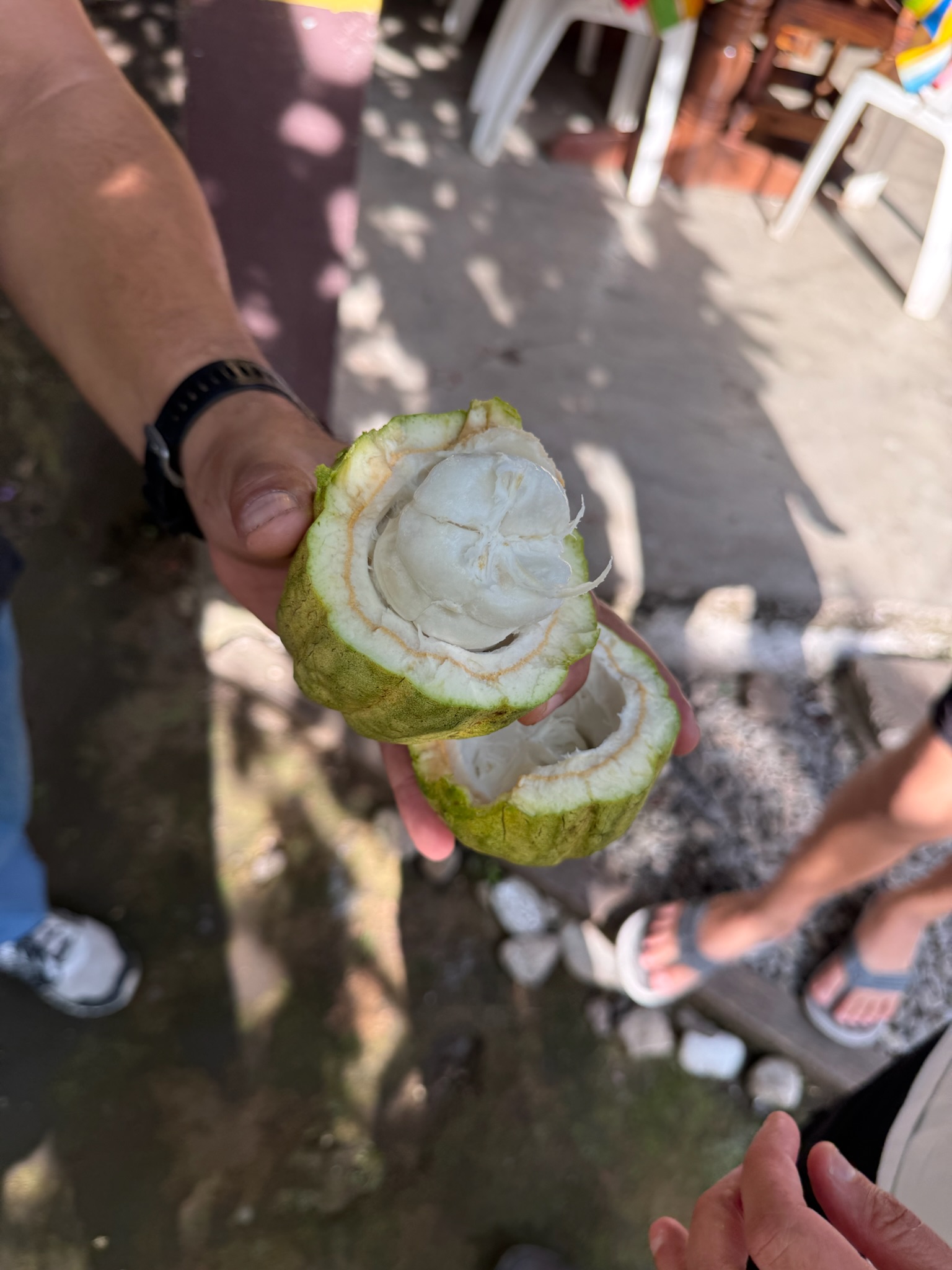
The ChocoMuseo had made the chocolate making process sound incredibly complicated. Miguel said that the seeds were simply laid on a rack to dry for a few days, then roasted.
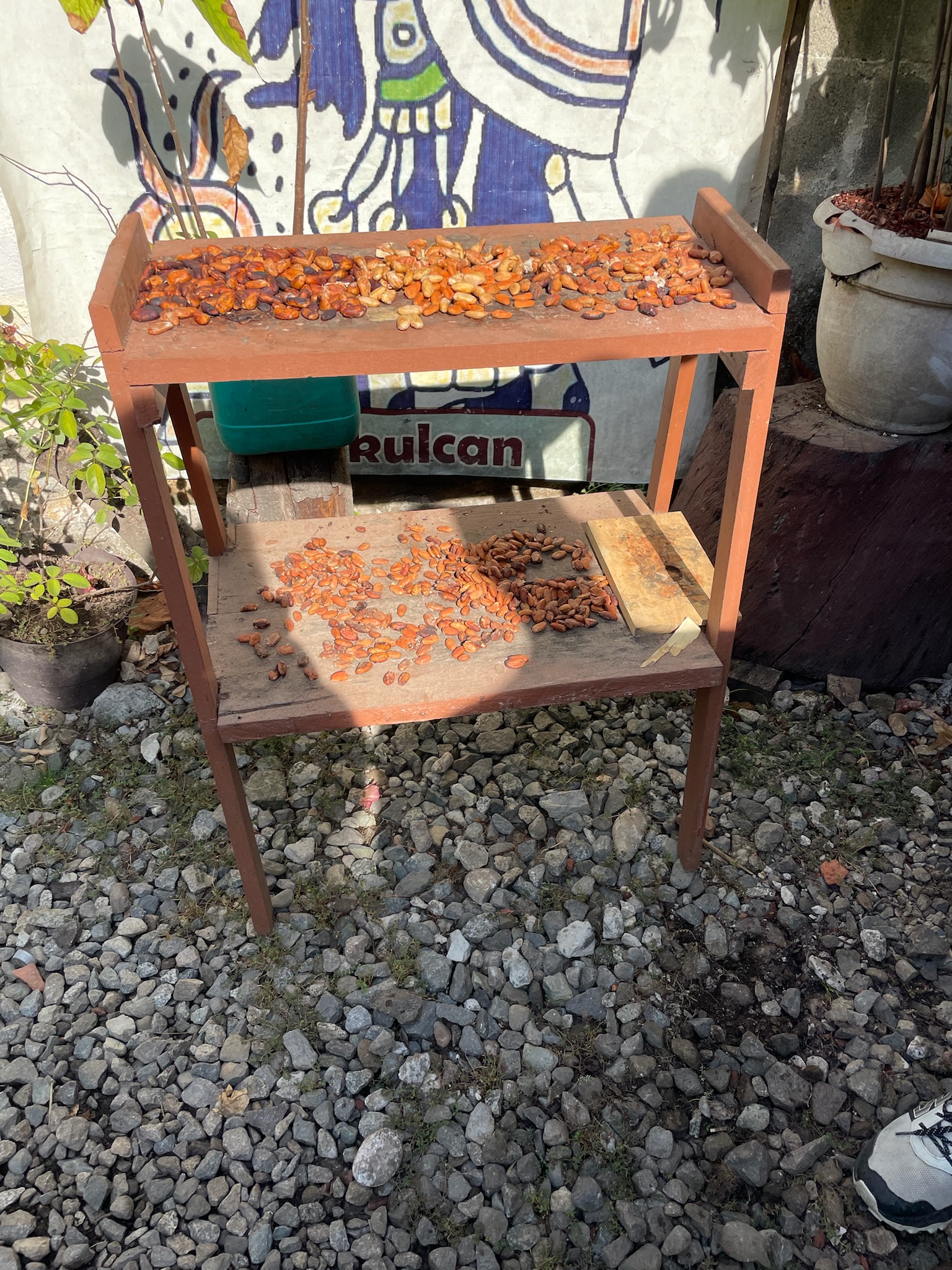
Once the seeds were roasted, the outer layer was peeled.
Once peeled, she put the seeds on a grinding stone and ground them with another rolling pin shaped stone.
We each gave grinding a try. The griding stone was surprisingly heavy and it took some effort to grind. Migel says she grinds as many as 100 kilos of seeds per day!
She put the chocolate into a ring mold. The chocolate would dry overnight and would be firm enough to remove from the mold by morning. We tasted it, and it was some of the richest chocolate we’ve ever had. It wasn’t nearly as bitter as we’d expected 100% pure chocolate to be.
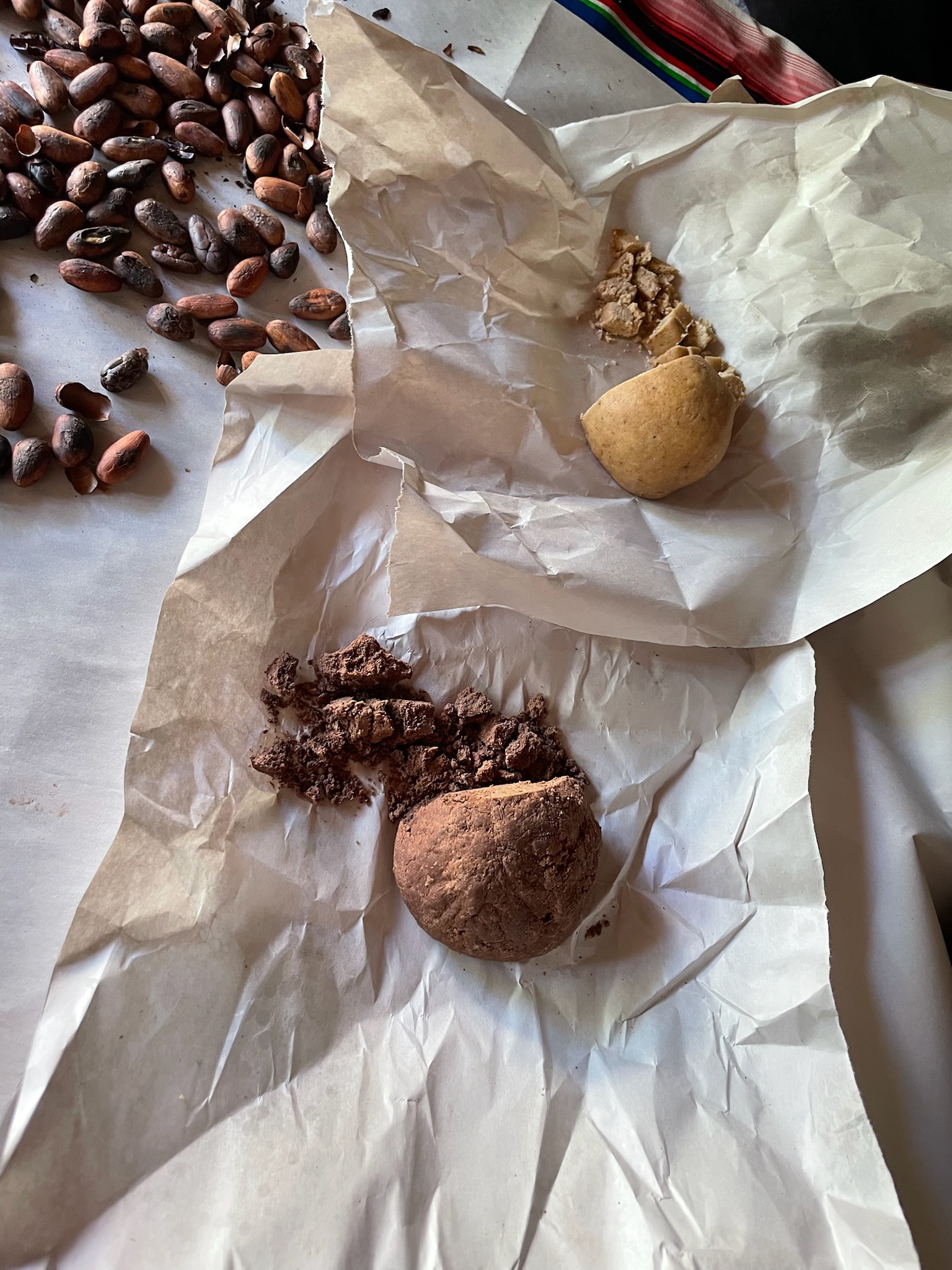
Miguel had us taste another molded food that was lighter in color, but the same texture. He asked us to identify it. We couldn’t. We were all surprised when he said it was peanuts, ground the same way as the chocolate was.
He said that the peanuts were the secret ingredient in the Mexican hot chocolate we’d had. He also said that the base for the Mexican hot chocolate was the same base as the local mole: ground cacao beans, peanuts, and cinnamon. Christi had been correct in her assessment that the hot chocolate tasted like mole!
On our way out, we purchased a couple of bags of 100% pure ground chocolate. Christi is looking forward to experimenting with it. We hopped in the car and went to our next stop… To be continued…

AWESOME! Thank you, thank you, thank you for sharing this trip with us! Since I cannot travel to that location, this is the next best thing! And I was salivating over all of the food that you told us about. I may try grinding some peanuts and putting them in my next cup of hot chocolate!